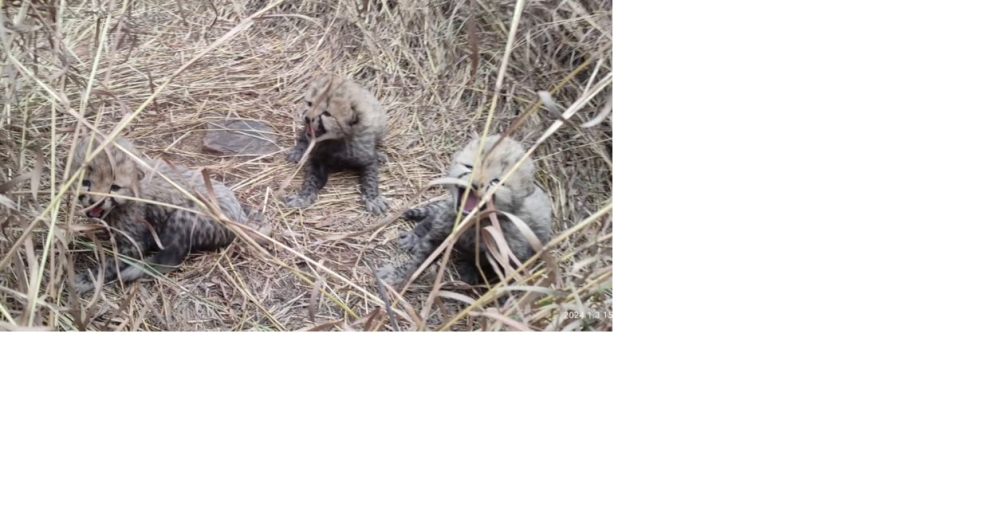Farmers should be aware of poisonous plants in their fields, such as the osonanga lily.
It is a perennial bulbous plant, creamy brown in colour, with greyish green leaves that are gen.
The osonanga lily is one of the so-called slangkop plants and is toxic to livestock.
erally produced together with or after the tubular flowers. These are borne at the top of the tall slender stem and are white with light-green longitudinal bands.
According to Wildlife Vets Namibia, the osonanga lily is popping up in several areas of the country again.
The plant is especially abundant in sandy to clay soils near dry river courses and pans flowers from September to December.
Being bulbous, the lilies are less dependent on rainfall than most other plants in the veld, drawing on their reserves to sprout early in spring before the rains. In drought years these plants are often the only greenery around for stock to eat livestock to eat.
Wildlife Vets warns that animals eating these plants are at risk of dying. Symptoms include diarrhoea, dehydration, lameness, bloating and death die to heart failure.
It says that the flower and young leaves are the most toxic.
“The problem is that during drought this is often the only green there is. Under normal grazing conditions, most animals will avoid eating the lily due to the awful taste, but under desperate drought conditions, animals are inclined to eat any fresh green plant material they can get.”
According to Wildlife Vets, some however believe that this plant has no effect on game and that game in general is not susceptible to plant toxicities, because they instinctively know and avoid toxic plants.
“There are a few exceptions to this rule. Game introduced from a different area will usually be naïve concerning the poisonous plants in their new home range and my therefore eat them.”
Also, it says that if there is nothing to eat, game also will not have much of a choice.
Wildlife Vets says that dosing affected animal with a large dose of activated charcoal (2gram/kg live weight) is effective as the charcoal absorbs and binds the plant toxins in the rumen, while supposedly also resorbing toxins from the blood back into the intestine.
It says that this is essential to minimise stress and exertion by keeping animals calm and rested.
Furthermore, poisoning can be prevented by fencing off infested areas and or the eradication of plants by digging up the bulbs of the plant.
“The bulbs should be thrown on a heap and burned. This should be done before the plant flowers and drops thousands of seeds.”
Wildlife Vets says that providing sufficient quantity and quality supplemental feeding near water points will reduce temptation to eat the plants while this also reduced the need of physical exertion which may lead to acute heart failure should the animal eat the plant.
It is a perennial bulbous plant, creamy brown in colour, with greyish green leaves that are gen.
The osonanga lily is one of the so-called slangkop plants and is toxic to livestock.
erally produced together with or after the tubular flowers. These are borne at the top of the tall slender stem and are white with light-green longitudinal bands.
According to Wildlife Vets Namibia, the osonanga lily is popping up in several areas of the country again.
The plant is especially abundant in sandy to clay soils near dry river courses and pans flowers from September to December.
Being bulbous, the lilies are less dependent on rainfall than most other plants in the veld, drawing on their reserves to sprout early in spring before the rains. In drought years these plants are often the only greenery around for stock to eat livestock to eat.
Wildlife Vets warns that animals eating these plants are at risk of dying. Symptoms include diarrhoea, dehydration, lameness, bloating and death die to heart failure.
It says that the flower and young leaves are the most toxic.
“The problem is that during drought this is often the only green there is. Under normal grazing conditions, most animals will avoid eating the lily due to the awful taste, but under desperate drought conditions, animals are inclined to eat any fresh green plant material they can get.”
According to Wildlife Vets, some however believe that this plant has no effect on game and that game in general is not susceptible to plant toxicities, because they instinctively know and avoid toxic plants.
“There are a few exceptions to this rule. Game introduced from a different area will usually be naïve concerning the poisonous plants in their new home range and my therefore eat them.”
Also, it says that if there is nothing to eat, game also will not have much of a choice.
Wildlife Vets says that dosing affected animal with a large dose of activated charcoal (2gram/kg live weight) is effective as the charcoal absorbs and binds the plant toxins in the rumen, while supposedly also resorbing toxins from the blood back into the intestine.
It says that this is essential to minimise stress and exertion by keeping animals calm and rested.
Furthermore, poisoning can be prevented by fencing off infested areas and or the eradication of plants by digging up the bulbs of the plant.
“The bulbs should be thrown on a heap and burned. This should be done before the plant flowers and drops thousands of seeds.”
Wildlife Vets says that providing sufficient quantity and quality supplemental feeding near water points will reduce temptation to eat the plants while this also reduced the need of physical exertion which may lead to acute heart failure should the animal eat the plant.




